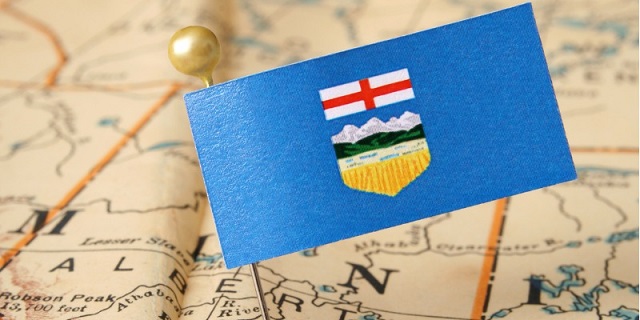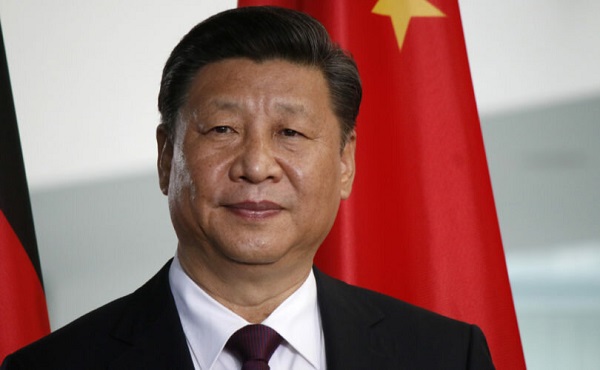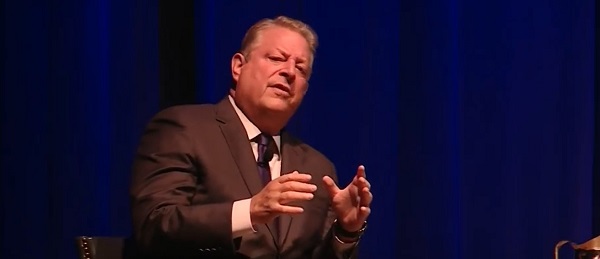Gerry Feehan
A Rainy Day in Montenegro
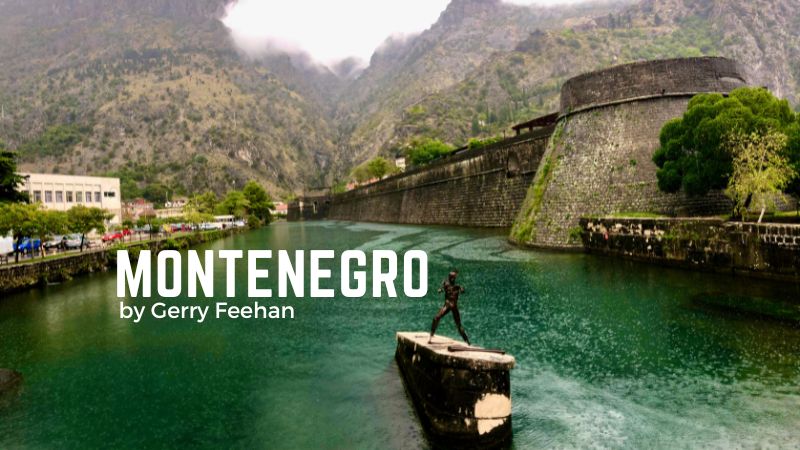
Dubrovnik City wall
Room 703, Valamar Hotel, Dubrovnik, Croatia.
I had a strange dream last night.
Well past midnight there came a quiet rap on the door. An apologetic bellboy pointed to a small man standing quietly in the hallway. The man sported a fine suit and monogrammed luggage. ‘I’m sorry,’ said the bellhop, ‘the Valamar is sold out
this evening. This gentleman needs a room. Only for tonight. Perhaps you can accommodate.’ Naturally I declined. However my wife, speaking from her comatose oblivion, insisted we invite the stranger in. ‘Sshh, it’s fine,’ she said simultaneously
snoring, ‘for today, we go to Montenegro.’
What my dream-world wife didn’t anticipate—but I did—was that our uninvited, nocturnal guest would soon become an unpleasant somnambulant nuisance and ultimately transform into a weapon-wielding demon. By the time I finally, politely
asked him to depart our quarters, the intruder had morphed into a loud, apocalyptic earthquake. I awoke in a heap of sweat to a thunderous lightning storm, crawled from bed, pulled closed the trembling illuminated curtains—and swore off rakija for the balance of our Balkan holiday. I tossed and turned the rest of that uncomfortable night, occasionally glancing irritably at my happily reposed spouse. The alarm tolled at 6:15am.
In a post-hallucinogenic stupor I stumbled into the hotel lobby and ran smack dab into the selfsame night-watchman who, in my torpor, had invited Armageddon-man into our room at witching hour. ‘And you call yourselves a 5-star hotel,’ I remarked testily. He regarded me uncertainly, shrugged and opened the lobby doors. Outside, standing curbside beside a dark blue Mercedes van, stood a veritable giant of a man; our driver for the day. He grinned grimly, swung the passenger door open and commanded us to climb in. I was fearful the nightmare was continuing. But as we pulled away from the dewy curb our mountainous chauffeur politely introduced himself as Zoran and began a casual, intriguing introduction to the history of Montenegro.

Incessant rain made for a dreary day
The downpour began in earnest as we neared the border. The Croatian exit authority inspected our papers with palpable disinterest—then stood up, exited his cramped cubicle and promptly disappeared into the mist. ‘Between shifts,’ explained
Zoran with a resigned shrug. After a 10-minute, stiflingly humid delay, an equally apathetic replacement arrived to re-scrutinize our passports. Documents eventually back in hand, we were permitted to depart Croatia and make the short descent into neighbouring Montenegro where another listless guard repeated the same agonizing process.
Everyone loves passport stamps. I entreated Zoran to ask the guard for some evidence that we were actually entering mysterious Montenegro, bragging rights for the folks back home. ‘This not good idea,’ said Zoran apologetically—but
unequivocally—and we pulled away from the tiny damp station and into a strengthening deluge. It was a half-hearted, bureaucratic, blustery beginning to a soppy day. (For no discernable reason, other than inane custom and mutual distrust,
countries of the former Yugoslavia demand perusal of papers upon both ingress and egress. But I digress.)
Montenegro. The name evokes visions of a small, opulent seaside protectorate where luxury yachts bob in an idyllic harbor surrounded by spectacular mountains. But while the country is indeed small, and is on the ocean, and does have a stunning mountain backdrop, Montenegro is certainly not well off. In fact Montenegro is one of Croatia’s poorest Balkan cousins. Together with Bosnia, Serbia and a few other newly-formed states, they were all part of Yugoslavia. In 1984 Yugoslavia hosted the Winter Olympics, welcoming the world’s best athletes to a snowy paradise. Nine years later the entire federation would descend into anarchy and civil war, the lid of a centuries-old pot, boiling with religious and ethnic hatred, finally blown off. Our destination was the walled city of Kotor, a Renaissance-era gem of narrow, picture-postcard lanes. As the European crow flies, the town is not far from the Croatian border, but getting there entails a long circuitous drive around the Gulf of Kotor, which perforates deeply, fjord-like, into the Montenegrin coastline.

Kotor
On arrival, we exited hesitantly from the van, unfurled our umbrellas and splashed into town. What should have been an interesting, leisurely stroll down blind alleys and through colourful curio shops turned into a quick excursion—hurdling
overflowing gutters and dodging the deluge spilling from dilapidated gargoyles in the old fortified town. Overall, the morning was a wet bust. Zoran was apologetic, as if he were personally responsible for the obscuring rain. ‘I wish you could see our beautiful mountains.’

But then came lunch—and, nonpareil, the best meal of our three-week Balkan adventure. I stepped, glasses fogged, into the Konoba Akustik Restaurant and discarded my broken umbrella amongst a stack of equally derelict parasols.
Rainwater, dripping from the ceiling, clanged into an ancient metal pail in the foyer. Expectations were low as we dodged around the overflowing bucket and took our squeaky seats at a rustic wooden table.
Then the food began to appear. First a hearty veal soup served with fresh jecmeni—barley flatbread. Then a platter of green olives and prosciutto. Then gnocchi and pasticada—beef marinated in wine vinegar. More jecmeni arrived to sop up stray sauces.

Perhaps a cocktail with your jecmeni?
The dishes kept coming. Stuffed to the gills, I declined desert, sat back in my rickety chair, and focused my attention on the adjoining table where Zoran and two large companions sat, surrounded by three nonplussed waiters and a gesticulating chef.
In unwavering concentration, they methodically devoured every dish we’d been offered plus massive plates of crni rizot—black risotto, and ajvar—spicy red pepper paste. Between mouthfuls they’d wedge in a large portion of Pag cheese. When the
skewers of lamb kebab arrived I could watch no more and directed my attention to the restaurant’s ornate opaque windows and the passersby sloshing outside.
Montenegrins are not the tallest people on earth—the Dutch stubbornly cling to that lofty position. But I can state (anecdotally at least, having spent one full day in the
country) that the people of Montenegro are really, really tall. And apparently it takes a lot of calories to develop that degree of vertical span.

Zoran is on the right… in case you were confused
It was a full day. On the long drizzly drive back to the Valamar Hotel, the windshield wipers flapped incessantly, hypnotizing me into a sleepy daze, interrupted only by Zoran’s occasional, meaningful collision with a muddy pothole. Nearly home, we passed through the beautiful old city of Dubrovnik. At a bus stop, under a portico tucked into the ancient city wall, I spied a small tidy man huddled under an umbrella, expensive luggage stacked neatly by his side. The fellow from my nightmare. I wiped my eyes and peered again. He was gone.
I slept dreamlessly that night.
Gerry Feehan is an award-winning travel writer and photographer. He lives in Kimberley, BC.

Thanks to Kennedy Wealth Management for sponsoring this series. Click on the ads and learn more about this long-term local business.
Gerry Feehan
Abu Simbel
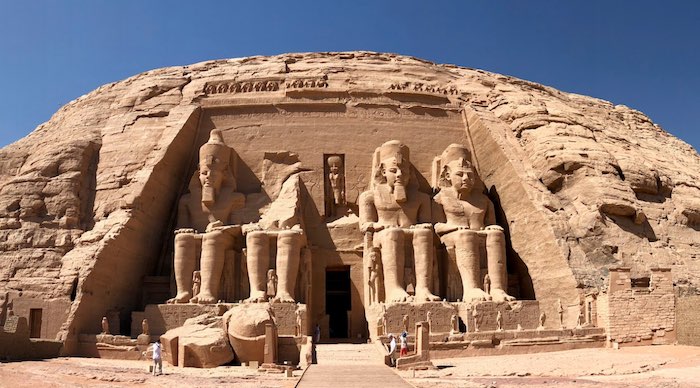
Abu Simbel is a marvel of ancient and modern engineering
I love looking out the window of an airplane at the earth far below, seeing where coast meets water or observing the eroded remains of some ancient formation in the changing light. Alas, the grimy desert sand hadn’t been cleaned from the windows of our EgyptAir jet, so we couldn’t see a thing as we flew over Lake Nasser en route to Abu Simbel. I was hopeful that this lack of attention to detail would not extend to other minor maintenance items, such as ensuring the cabin was pressurized or the fuel tank full.
We had just spent a week on a dahabiya sailboat cruising the Nile River, and after disembarking at Aswan, were headed further south to see one of Egypt’s great
monuments. There are a couple of ways to get to Abu Simbel from Aswan. You can ride a bus for 4 hours through the scorched Sahara Desert, or you can take a plane for the short 45-minute flight.
Opaque windows notwithstanding, I was glad we had chosen travel by air. Abu Simbel is spectacular, but there’s really not much to see except the monument itself and a small adjacent museum. So most tourists, us included, make the return trip in a day. And fortunately we had Sayed Mansour, an Egyptologist, on board. Sayed was there to explain all and clear our pained expressions.
Although it was early November, the intense Nubian sun was almost directly overhead, so Sayed led us to a quiet, shady spot where he began our introduction to
Egyptian history. Abu Simbel is a marvel of engineering — both modern and ancient. The temples were constructed during the reign of Ramses II. Carved from solid rock in a sandstone cliff overlooking the mighty river, these massive twin temples stood sentinel at a menacing bend in the Nile — and served as an intimidating obstacle to would-be invaders — for over 3000 years. But eventually Abu Simbel fell into disuse and succumbed to the inevitable, unrelenting Sahara. The site was nearly swallowed by sand when it was “rediscovered” by European adventurers in the early 19 th century. After years of excavation and restoration, the monuments resumed their original glory.
Then, in the 1960’s, Egyptian president Abdel Nasser decided to construct a new “High Dam” at Aswan. Doing so would create the largest man-made lake in the
world, 5250 sq km of backed-up Nile River. This ambitious project would bring economic benefit to parched Egypt, control the unpredictable annual Nile flood and also supply hydroelectric power to a poor, under-developed country. With the dam, the lights would go on in most Egyptian villages for the first time. But there were also a couple of drawbacks, which were conveniently swept under the water carpet by the government. The new reservoir would displace the local Nubian population whose forbearers had farmed the fertile banks of the Nile River for millennia. And many of Egypt’s greatest monuments and tombs would be forever submerged beneath the deep new basin — Abu Simbel included. But the government proceeded with the dam, monuments be damned.
Only after the water began to rise did an international team of archaeologists, scientists — and an army of labourers — begin the process of preserving these
colossal wonders. In an urgent race against the rising tide, the temples of Abu Simbel were surgically sliced into gigantic pieces, transported up the bank to safety and reassembled. The process was remarkable, a feat of engineering genius. And today the twin edifices, honouring Ramses and his wife Nefertari remain, gigantic, imperious and intact. But instead of overlooking a daunting corner of the Nile, this UNESCO World Heritage site now stands guard over a vast shimmering lake.
Sayed led us into the courtyard from our shady refuge and pointed to the four giant Colossi that decorate the exterior façade of the main temple. These statues of
Ramses were sculpted directly from Nile bedrock and sat stonily observing the river for 33 centuries. It was brutally hot under the direct sun. I was grateful for the new hat I had just acquired from a gullible street merchant. Poor fellow didn’t know what hit him. He started out demanding $40, but after a prolonged and brilliant negotiating session, I closed the deal for a trifling $36. It was difficult to hold back a grin as I sauntered away sporting my new fedora — although the thing did fall apart a couple of days later.
Sayed walked us toward the sacred heart of the shrine and lowered his voice. Like all Egyptians, Sayed’s native tongue is Arabic. But, oddly, his otherwise perfect English betrayed a slight cockney accent. (Sayed later disclosed that he had spent a couple of years working in an East London parts factory.) He showed us how the great hypostyle hall of the temple’s interior is supported by eight enormous pillars honouring Osiris, god of the underworld.

Exploring the inner temple

Nefertari
Sayed then left us to our devices. There were no other tourists. We had this incredible place to ourselves. In the dim light, we scampered amongst the sculptures
and sarcophagi, wandering, hiding and giggling as we explored the interior and its side chambers. At the far end lay the “the holiest of holies” a room whose walls were adorned with ornate carvings honouring the great Pharaoh’s victories — and offering tribute to the gods that made Ramses’ triumphs possible.
Exterior photographs of Abu Simbel are permitted, but pictures from within the sanctuary are verboten — a rule strictly enforced by the vigilant temple guardians — unless you offer a little baksheesh… in which case you can snap away to your heart’s content. Palms suitably greased, the caretakers are happy to pose with you in front of a hidden hieroglyph or a forbidden frieze, notwithstanding the stern glare of Ramses looking down from above.

A little baksheesh is key to holding the key
After our brief few hours at Abu Simbel, we hopped back on the plane. The panes weren’t any clearer but, acknowledging that there really wasn’t much to see in the Sahara — and that dirty airplane windows are not really a bona fide safety concern — I took time on the short flight to relax and bone up on Ramses the Great, whose mummified body awaited us at the Egyptian Museum in Cairo.
Exodus Travel skilfully handled every detail of our Egypt adventure: www.exodustravels.com/
Gerry Feehan is an award-winning travel writer and photographer. He lives in Kimberley, BC.

Thanks to Kennedy Wealth Management for sponsoring this series. Click on the ads and learn more about this long-term local business.
Gerry Feehan
Cairo – Al-Qahirah
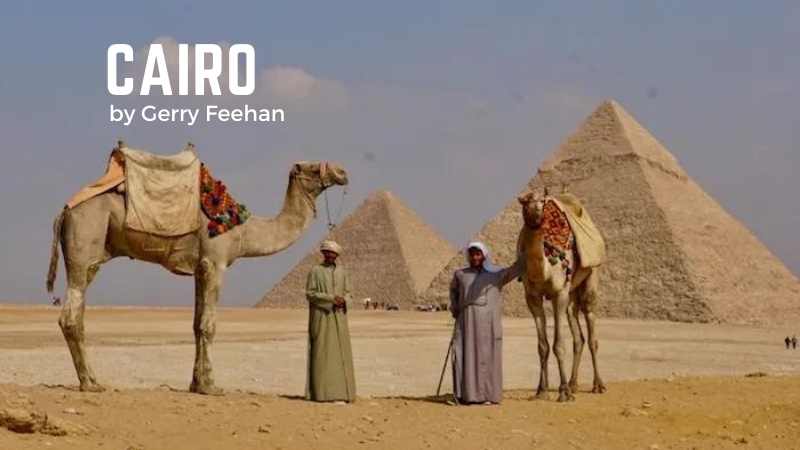
The Pyramids of Giza
The first thing one notices upon arrival in Egypt is the intense level of security. I was screened once, scanned twice and patted down thrice between the time we landed at the airport and when we finally stepped out into the muggy Cairo evening. At our hotel the scrutiny continued with one last investigation of our luggage in the lobby. Although Egyptian security is abundant in quantity, the quality is questionable. The airport x-ray fellow, examining the egg shaker in my ukulele case, sternly demanded, “This, this, open this.” When I innocently shook the little plastic thing to demonstrate its impermeability he recoiled in horror, but then observed it with fascination and called over his supervisor. Thus began an animated, impromptu percussion session. As for the ukulele, it was confiscated at hotel check-in and imprisoned in the coat check for the duration of our Cairo stay. The reasons proffered for the seizure of this innocuous little instrument ranged from “safety purposes” to “forbidden entertainment”. When, after a very long day, we finally collapsed exhausted into bed, I was shaken — but did not stir.
Al-Qahirah has 20 million inhabitants, all squeezed into a thin green strip along the Nile River. Fading infrastructure and an exponential growth in vehicles have contributed to its well-deserved reputation as one of the world’s most traffic-congested cities. The 20km trip from our hotel in the city center, to the Great Pyramid of Cheops at Giza across the river, took nearly two hours. The driver smiled, “Very good, not rush hour.”
Our entrance fee for the Giza site was prepaid but we elected to fork out the extra Egyptian pounds to gain access to the interior of the Great Pyramid. Despite the up-charge — and the narrow, dark, claustrophobic climb – the reward, standing in Cheop’s eternal resting place, a crypt hidden deep inside the pyramid, was well worth it. We also chose to stay after sunset, dine al fresco in the warm Egyptian evening, and watch the celebrated ‘sound and light’ performance. The show was good. The food was marginal. Our waiter’s name was Fahid. Like many devout Muslim men, he sported a zabiba, or prayer bump, a callus developed on the forehead from years of prostration. Unfortunately throughout the event Fahid hovered over us, attentive to the point of irritation, blocking our view of the spectacle while constantly snapping fingers at his nervous underlings. The ‘son et lumière’ show was a little corny, but it’s pretty cool to see a trio of 4500-year-old pyramids – and the adjoining Great Sphinx — illuminated by 21 st century technology.

The Great Sphinx

Giza at nightThe next night our group of six Canucks attended an Egyptian cooking class. Our ebullient hostess was Anhar, (‘the River’ in Arabic). Encouraged by her contagious enthusiasm, we whipped up a nice tabouli salad, spicy chicken orzo soup and eggplant moussaka. We finished up with homemade baklava. Throughout the evening, Anhar quizzed us about the ingredients, the herbs and spices, their origins and proper method of preparation. Anyone who answered correctly was rewarded with her approving nod and a polite clap. Soon a contest ensued. Incorrect answers resulted in a loud communal ‘bzzzt’ — like the sound ending a hockey game. It’s not polite to blow one’s own horn, but the Feehan contingent acquitted themselves quite nicely. If I still had her email, Anhar could confirm this.
Cairo was not the highlight of our three-week Egyptian holiday, but a visit to the capital is mandatory. First there’s the incredible Pyramids. But as well there’s the Egyptian Museum that houses the world’s largest collection of Pharaonic antiquities including the golden finery of King Tutankhamen and the mummified remains of Ramses the Great. Ramses’ hair is rust coloured and thinning a little, but overall he looks pretty good for a guy entering his 34 th century.

Ramses the Great

Then there’s Khan el-Khalili, the old souk or Islamic bazaar. We strolled its ancient streets and narrow meandering alleyways, continually set upon by indefatigable street hawkers. “La shukraan, no thanks,” we repeated ineffectually a thousand times. The souk’s cafes were jammed. A soccer match was on. The ‘beautiful game’ is huge in Egypt. Men and women sat, eyes glued to the screen, sipping tea and inhaling hubbly bubbly.

The Old Souk Bazaar

Selfies, Souk style
An aside. When traveling in Egypt, be sure to carry some loose change for the hammam (el baño for those of you who’ve been to Mexico). At every hotel, restaurant, museum and temple — even at the humblest rural commode — an attendant vigilantly guards the lavatory. And have small bills for the requisite baksheesh. You’re not getting change.
After our evening in the souk we had an early call. Our guide Sayed Mansour met us at 6am in the hotel lobby. “Yella, yella. Hurry, let’s go,” he said. “Ana mish bahasir – I’m not joking.” “Afwan,” we said. “No problem,” and jumped into the van. As we pulled away from the curb Sayed began the day’s tutorial, reciting a poem by Percy Blythe Shelly:
I met a traveller from an antique land,
Who said—“Two vast and trunkless legs of stone
Stand in the desert. . . . My name is Ozymandias, King of Kings;
Look on my Works, ye Mighty, and despair!”
And we were off, through the desert, to Alexandria. Founded by Alexander the Great in 332 BC, Egypt’s ancient capital was built on the Nile delta, where the world’s longest river meets the Mediterranean Sea. The day was a bit of a bust. The city was once renowned for its magnificent library and the famed Lighthouse of Alexandria. But the former burnt down shortly after Christ was born and the latter — one of the original seven wonders of the ancient world – toppled into the sea a thousand years ago. Absent some interesting architecture, a nice view of the sea from the Citadel — and Sayed’s entertaining commentary — Alexandria wasn’t really worth the long day trip. Besides, we needed to get back to Cairo and pack our swimwear. Sharm el Sheikh and the warm waters of the Red Sea were next up on the Egyptian agenda.

Gerry with some Egyptian admirers
Exodus Travel skilfully handled every detail of our trip: www.exodustravels.com And, if you’re thinking of visiting Egypt, I can suggest a nice itinerary. No sense reinventing the pyramid: [email protected]
Gerry Feehan is an award-winning travel writer and photographer. He lives in Kimberley, BC.

Thanks to Kennedy Wealth Management for sponsoring this series. Click on the ads and learn more about this long-term local business.
-
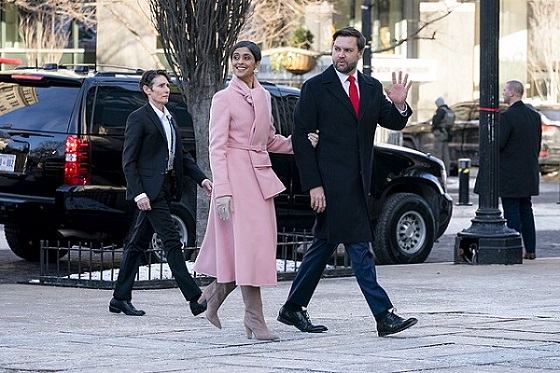
 International2 days ago
International2 days agoVice President Vance, Second Lady to visit Greenland on Friday
-
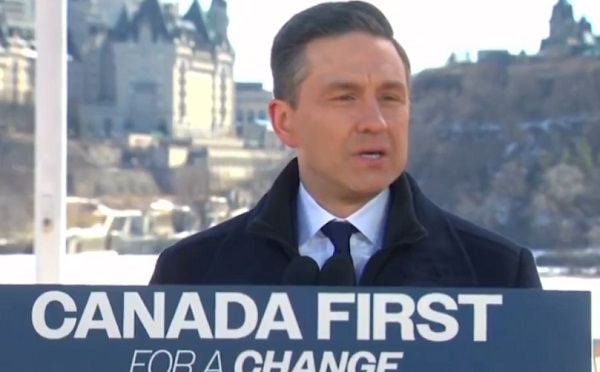
 2025 Federal Election1 day ago
2025 Federal Election1 day agoPoilievre refuses to bash Trump via trick question, says it’s possible to work with him and be ‘firm’
-

 International2 days ago
International2 days agoTrump orders proof of citizenship to vote in federal elections
-

 2025 Federal Election16 hours ago
2025 Federal Election16 hours agoFool Me Once: The Cost of Carney–Trudeau Tax Games
-

 2025 Federal Election2 days ago
2025 Federal Election2 days agoVoters should remember Canada has other problems beyond Trump’s tariffs
-

 Daily Caller2 days ago
Daily Caller2 days agoCover up of a Department of Energy Study Might Be The Biggest Stain On Biden Admin’s Legacy
-

 Community1 day ago
Community1 day agoSupport local healthcare while winning amazing prizes!
-

 2025 Federal Election2 days ago
2025 Federal Election2 days agoPoilievre to let working seniors keep more of their money






